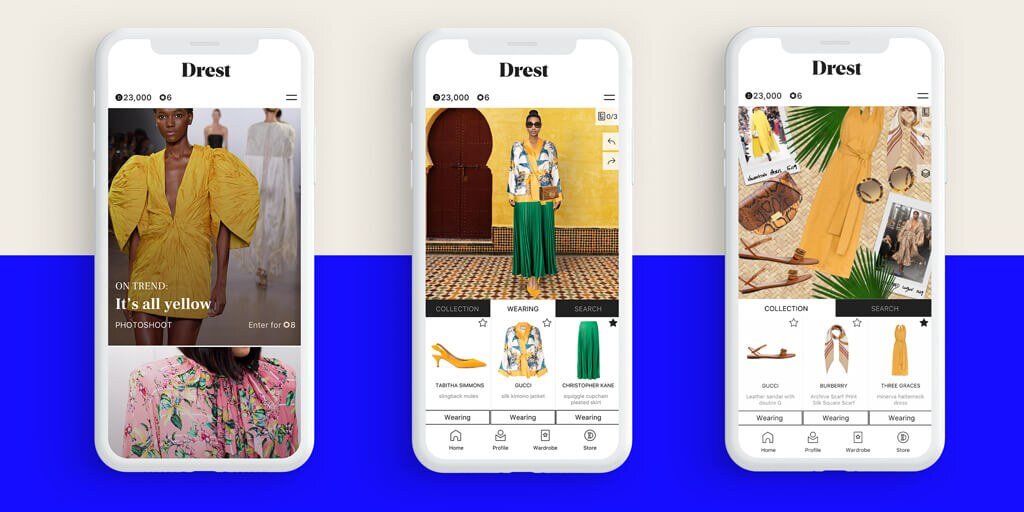Unexpected combinations are always a good idea, especially in fashion. When opposites collide, whether in Nikkei cuisine (Peruvian ingredients molded by Japanese techniques), Latin trap, or the latest Moncler Genius collection, it creates magic. The fall of barriers incites in us a certain notion of novelty, excitement, and curiosity. It is the potential for variety and push of boundaries of what is already known that seduces us back to an idea we’re already accustomed to.
Enter the combination of gaming and luxury fashion: two industries which are usually strongly defined by the gender of their users, targeting completely different personas. Even though it is clear that in today’s digital culture, this mix is absolutely the road to success. I always considered gamification initiatives in fashion as a minor niche, only attractive for early adopters or Gen Z. However, by looking at recent data, this is clearly a misconception.
According to reports in 2019, global app store revenues from games were approximately $68.5 billion. Thanks to the ubiquity of smartphones, a gamer is no longer synonymous with the geek archetype playing video games in a dark room. Most gamers today are people who are casually playing mobile games during the day just to kill time or switch off. Along with the change in demographics, also gender is no longer the dominant factor, with an increasing percentage of women playing games.
Many brands have recognized the potential in opposites. With initiatives like Burberry’s online game called B bounce and the peculiar game Gucci Arcade app, inspired by 80s arcade venues. However, a new consumer has emerged. Attaching games to traditional monobrand names will not necessarily create engagement over time. Millennials and Gen Z jump from one brand to another in a matter of seconds, comparing from thousands of brands, constantly trying to define their identity through their purchases and always looking for variety. As Li Edelkoort, the famous trend forecaster wrote in her famous Anti-Fashion manifesto for the next decade. “The consumers of today and tomorrow are going to choose for themselves, creating and designing their own wardrobes.”
“The consumers of today and tomorrow are going to choose for themselves, creating and designing their own wardrobes.” -Li Edelkoort
Launching this March, Drest is a new gaming app from the former editor-in-chief of Porter & Harper’s Bazaar, Lucy Yeomans. Drest is aiming to be the world’s first interactive game in the luxury market intending to revamp the way Millennials and Gen Z shop for luxury fashion.
Yeomans saw the potential of using games as a new way for communication in a somewhat dormant industry. In an interview with Vogue, she said “I saw people I respected playing this game where they had to grow strawberry patches and herd chicks and cows, and I thought, This is crazy. And then I thought, what if you were doing that with something you cared about—like shoes and bags and fashion?”
In Drest you play a professional stylist, compete in challenges by dressing up human avatars and receive feedback from a digital community. As you play you can and level up your title from wardrobe intern to Nano influencer, also the app features real life designs allowing users through one-click shop from Farfetch.
The game is strongly focused on the values it stands for, ambitiously hoping to challenge the fast-fashion industry, by reducing overproduction and making virtual fashion cool. Users will be able to try different colors of a certain object before sending it to production and share virtual outfits on social media.
A similar fashion gaming app is Ada, co-founded by fashion folk Alexia Niedzielski and Elizabeth von Guttman, along with Andy Ku, a Korean gaming guru. Ada allows you to pick from a variety of 3D luxury interiors or urban backdrops – where you can style your chosen avatar in Prada, then take a series of shots to share on your social media or in-message with friends. Users can then buy these clothes directly from the 20+ luxury brands currently signed up.
An Ada avatar in a Prada look, Christian Louboutin boots, and Gentle Monster sunglasses. Photo: howtospendit.ft.com
According to the self-determination theory, developed by researchers Edward L. Deci and Richard M. Ryan’s work on motivation in the 1970s and 1980s, certain conditions can facilitate the experience of our ideal self. When we fulfil needs such as autonomy, competence, and relatedness, it is more likely we can reduce our perceived discrepancy between our actual self and our ‘ideal self’. Perhaps both gaming and luxury fashion are similar in the sense they create for us a “safe” environment to thrive, and take small actions to reach the experience this ideal self.
In his book, The Shallows: How the internet is changing the way we think, read and remember, author Nicholas Carr writes “every technology is an expression of human will. Through our tools, we seek to expand our power and control over our circumstances”. In a society addicted to new information but at the same time ironically overwhelmed by it, gaming is another tool for coping and escapism which popularity will only continue to grow in many different industries including fashion.
And yet ironically, in his 1964 cult read among psychologists, Games People Play (the reference in this title and a SATC Season 2 episode) author Eric Berne writes, “…awareness requires living in the here and now, and not in the elsewhere, the past or the future”. Whether we can learn to value virtual fashion as much the real thing in the here and now remains to be seen.












As news of PSYKHE’s launch spreads, The Psychology of Fashion and PSYKHE’s founder Anabel Maldonado sat down with editors at Forbes and WWD to discuss the platform, the journey and why the world needs personalization powered by AI and psychology.